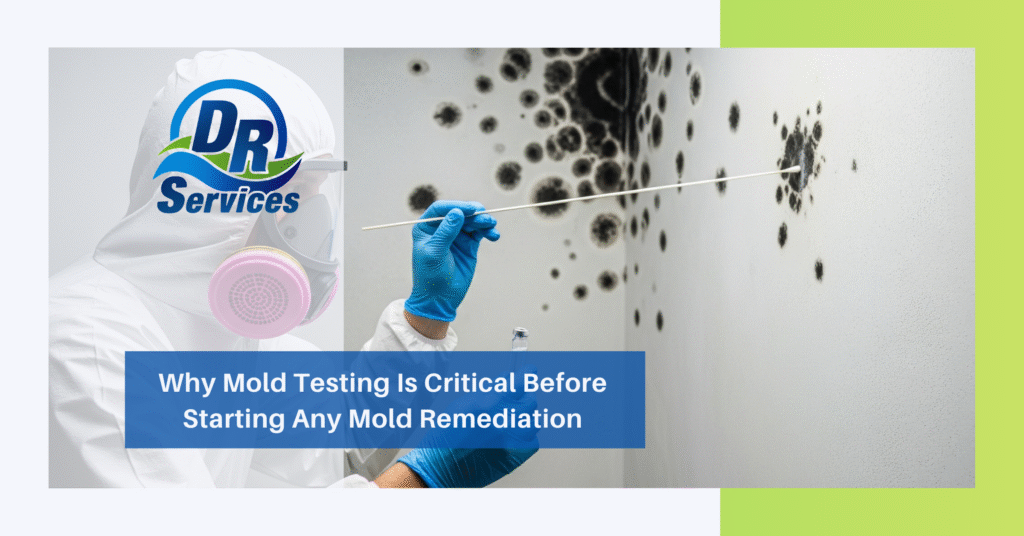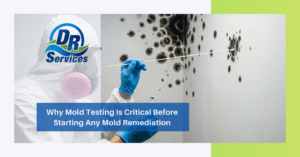Introduction
Mold can be a silent invader, causing significant damage to both your health and property before you even realize it’s there. Many homeowners and property managers rush into mold remediation without proper testing. However, mold testing is a crucial first step that can save you time, money, and unnecessary disruption.
What Is Mold Testing?
Mold testing involves collecting air or surface samples to determine the presence, type, and concentration of mold spores in your environment. It’s typically done by certified professionals using specialized equipment.
Why Mold Testing Should Come First
1. Identifies the Type of Mold
Not all mold is created equal. Some types, like Stachybotrys chartarum (black mold), are more toxic than others. Knowing the exact strain helps determine the urgency and safety measures required.
2. Determines the Extent of Contamination
Testing reveals how far the mold has spread, whether it’s isolated to a single corner or has infiltrated HVAC systems, ceilings, and walls.
3. Provides a Baseline for Post-Remediation Testing
Initial mold testing provides a “before” snapshot. Once remediation is done, a second test ensures the mold levels are reduced and the job is complete.
Health Risks of Ignoring Mold Testing
Failing to test before remediation can result in ineffective or incomplete cleanup. Mold exposure can lead to:
- Respiratory issues
- Skin irritation
- Headaches and fatigue
- Allergic reactions
- Worsened asthma symptoms
How Professionals Conduct Mold Testing
Step 1: Visual Inspection
Experts look for visible signs of mold and moisture problems.
Step 2: Air Sampling
Air samples are collected from both inside and outside the building to compare spore levels.
Step 3: Surface Sampling
Swabs or tape lifts are used to collect spores directly from suspicious surfaces.
Step 4: Lab Analysis
Samples are sent to a certified lab to identify mold types and concentrations.
Step 5: Detailed Reporting
You receive a report outlining what mold is present, how much, and where it’s concentrated.

Common Areas Where Mold Testing Is Needed
- Basements and crawl spaces
- Bathrooms and kitchens
- Around windows and HVAC systems
- Behind wallpaper or drywall
- After flooding or water leaks
Testing in these areas ensures no mold colony goes unnoticed.
The Financial Impact of Skipping Mold Testing
Skipping mold testing may seem like a cost-saving move, but it can backfire:
- Missed spots: You might clean one area, while hidden colonies continue to grow elsewhere.
- Re-contamination: Without knowing the full scope, mold can return, leading to additional costs.
- Legal issues: For landlords or sellers, not testing can lead to lawsuits if mold causes tenant or buyer health issues.
When Should You Get Mold Testing?
Consider testing if:
- You notice a musty odor
- You’ve recently experienced water damage
- Your family is experiencing unexplained allergic symptoms
- You’re buying/selling a home
- You plan to renovate or remediate the mold
Mold Testing and Insurance
Some insurance policies require documented proof of mold before they’ll cover remediation. A professional mold test strengthens your case when filing claims.
DIY vs. Professional Mold Testing
DIY Kits:
- Cheap and accessible
- Limited accuracy
- No lab certification
Professional Testing:
- Accurate and thorough
- Certified results
- Detailed reporting and recommendations
While DIY kits may provide peace of mind, they’re not reliable enough for serious infestations or legal/insurance purposes.
Final Thoughts
Mold remediation without testing is like treating a fever without knowing the illness. You might address the symptoms but miss the root cause. Professional mold testing offers clarity, safety, and confidence, ensuring the remediation process is effective and complete. Contact us today!





